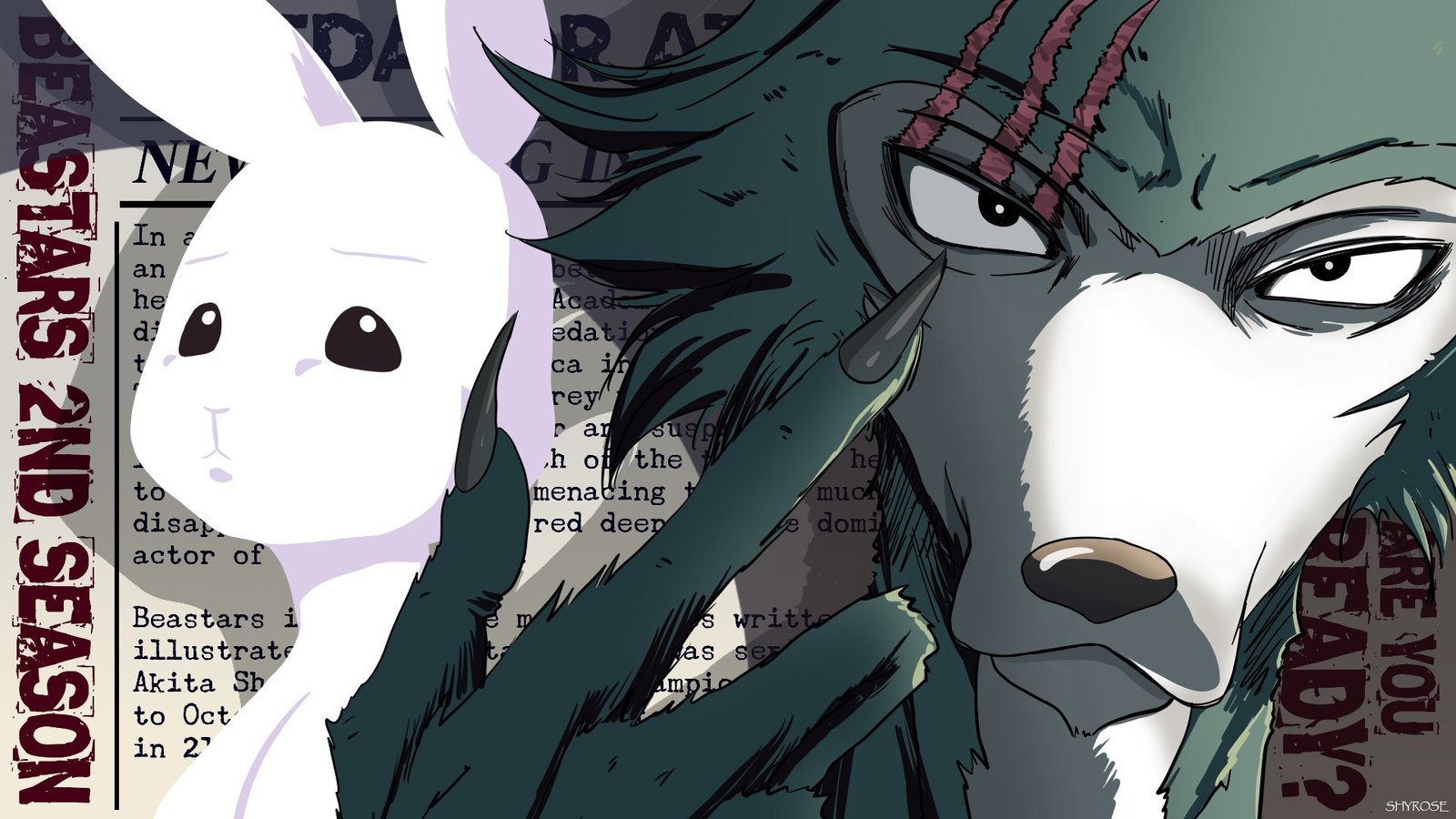Introduction
In the vast landscape of anime, few series have challenged societal norms and explored complex psychological themes as daringly as “Beastars”. Created by Paru Itagaki and adapted into an anime by Orange Studio, this extraordinary series transcends traditional animal narratives, presenting a nuanced exploration of identity, social hierarchy, and the delicate balance between predator and prey.
Set in a world where carnivores and herbivores coexist in a carefully maintained social structure, “Beastars” immediately subverts expectations. Unlike typical anthropomorphic stories that rely on cute character designs, this anime delves deep into the psychological tensions that arise from biological imperatives and societal constraints.
Narrative Complexity and Character Development
The story primarily follows Legoshi, a gray wolf struggling with his predatory nature in a society that demands constant self-restraint. As a large carnivore, Legoshi represents the internal conflict between instinctual desires and societal expectations. His character arc is a profound journey of self-discovery, challenging viewers to consider the nuanced nature of identity beyond simple biological determinism.
Opposite Legoshi stands Haru, a small white dwarf rabbit who becomes central to the narrative’s exploration of vulnerability, strength, and perception. Their relationship becomes a powerful metaphor for understanding differences, confronting prejudices, and challenging predetermined social roles.
Psychological Depth and Themes
“Beastars” is not merely an anime about animals but a sophisticated allegory for human social dynamics. The series masterfully explores:
- Systemic discrimination
- Biological impulses versus social conditioning
- Personal identity and self-acceptance
- Power structures and marginalization
The animation style plays a crucial role in conveying these complex themes. Orange Studio’s unique 3D animation technique, which blends traditional anime aesthetics with more realistic movement, creates a distinct visual language that enhances the narrative’s psychological depth.
Visual and Artistic Excellence
The anime’s visual representation is revolutionary. Unlike traditional 2D anime, “Beastars” utilizes a hybrid 3D animation style that brings unprecedented nuance to character movements and expressions. Each animal character maintains distinctive physical characteristics while expressing deeply human emotions.
The color palette shifts dramatically to reflect emotional states and narrative tensions. Muted, almost monochromatic scenes during moments of introspection contrast sharply with vibrant, dynamic sequences that represent emotional breakthroughs or intense confrontations.
Musical Score and Sound Design
The musical composition in “Beastars” deserves special recognition. Composed by Satoru Kōsaki, the soundtrack seamlessly blends jazz-influenced tracks with more melancholic, introspective pieces. The music becomes another layer of storytelling, reflecting characters’ internal struggles and the series’ complex emotional landscape.
Cultural and Social Commentary
Beyond its narrative brilliance, “Beastars” offers profound social commentary. The predator-prey dynamic serves as a powerful metaphor for real-world social hierarchies, discrimination, and the constant negotiation between individual identity and societal expectations.
By presenting these themes through anthropomorphic characters, the series creates a unique narrative distance that allows viewers to engage with challenging concepts more objectively. It invites introspection without feeling didactic or moralistic.
Critical Reception and Impact
Since its debut, “Beastars” has garnered critical acclaim for its innovative storytelling and philosophical depth. It has challenged conventional anime narratives and expanded the medium’s potential for sophisticated storytelling.
The series has particularly resonated with audiences seeking narratives that go beyond surface-level entertainment, offering complex character studies and nuanced social commentary.
Conclusion
“Beastars” is more than an anime—it’s a groundbreaking exploration of identity, social dynamics, and the complex interactions between biological impulses and societal norms. It challenges viewers to look beyond surface appearances and consider the intricate psychological landscapes that shape individual and collective experiences.
FAQ
Q1: Is “Beastars” suitable for all age groups? A: Due to its mature themes and psychological complexity, “Beastars” is recommended for teenage and adult audiences.
Q2: How many seasons of “Beastars” are available? A: Currently, two seasons have been released, covering significant portions of the original manga.
Q3: Is the anime faithful to the original manga? A: The anime adaptation stays relatively true to the manga’s core narrative and themes, with some artistic adaptations.
Q4: What makes “Beastars” different from other anthropomorphic anime? A: Unlike typical anthropomorphic stories, “Beastars” offers a deep psychological exploration of social dynamics, identity, and biological impulses.
Q5: Can I watch “Beastars” if I’m not typically an anime fan? A: Absolutely! Its unique storytelling and universal themes make it accessible to viewers beyond traditional anime audiences.
Ratings:
- Story: 9/10
- Animation: 8.5/10
- Character Development: 9.5/10
- Thematic Depth: 9/10
- Overall: 9/10
